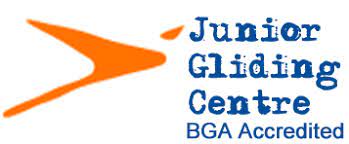Pursue your glider training
with York Gliding Centre

Why Train at Rufforth?
We have a number of certified flight instructors who are available to provide full training to help you progress from novice to solo and beyond. We are a friendly community who support our fellow members.
Who Can Learn?
Pupils can start as early as they like and there is no upper age limit
The minimum age for flying solo in a glider is 14. Training with an instructor can begin earlier as long as the pupil is big enough to reach the controls, but it is best not to start at much less than age 13 so that there is no long wait before the first solo flight.
There is no upper age limit to train to fly gliders. To fly solo, adults need to be able to show that they meet the medical requirements for holding a car driving licence. Those who cannot meet this requirement often continue to fly accompanied by a safety pilot or instructor.
The only other limitation is that gliders are designed for pilots weighing 16 stones (102kg) or less. If you are over about 6ft 3ins (190cm) tall you may be uncomfortable, although you are welcome to come and try sitting in the cockpit.
What Does it Cost?
It is surprisingly cost effective to train in a glider
Everyone who glides at York Gliding Centre becomes a member, and we have a number of different rates available. Once you become a member, you can fly at member rates and pay for launches and gliding time. Learn more about launch types here.
In all cases, instruction is carried out by voluntary instructors and is free.
Where Do I Sign Up?
Memberships can be purchased directly from the club by calling us or visiting our office at the centre. You can always try out gliding with our trial lesson packages, which also include 3 months membership. During this initial period you only pay for the launches and time spent in the glider.
The Road to Certification
Pre-Solo Training
Bronze Endorsement
For some pilots flying solo is their principal goal, after which they are comfortable flying locally. The basic qualification to be able to do this on your own is called the Bronze Badge and getting it involves an assessment of your flying skills, some interesting classroom lessons and a multiple-choice exam but we run ground schools to support you.
Cross Country Endorsement
For many pilots, it’s what follows the Bronze Badge that makes gliding so rewarding. You will learn how to use rising air currents to stay-up for longer and longer periods and how to navigate around the countryside over increasing distances.
The sport of gliding is about covering a pre-declared course as quickly as you can, skilfully reading the clues in the clouds, in the sky and on the ground. To fly further afield you will need to get the Cross-Country Endorsement which involves navigation training and land-out drills.
The Bronze Badge plus Cross-Country Endorsement is the gliding equivalent of the private pilot’s licence. If you wish, you can use these qualifications to apply to the Civil Aviation Authority for a Light Aircraft Pilot’s Licence for Sailplanes [LAPL(S)], which is valid across Europe, or a Sailplane Pilot’s Licence [SPL] which is valid worldwide but these may have additional medical requirements.
Cross Country and Beyond
Once you have met the Bronze badge and cross-country requirements you will have a good understanding of principles of flight, soaring, navigation, and air law, and will be capable of landing in a field in the case of the lift failing. You will now be ready to set off on cross-country.
If you are like most of us, your early cross-country flights will be rather slow, and you won’t be covering very much distance. But you never stop learning!
As you gain experience you will be getting more skilled at reading the sky and will be flying faster and further. Ambitious pilots can pursue the FAI Silver, Gold and Diamond badges awarded for flying achievements (such as 300 km and 500 km goal flights), and test their skills in competition with others if they have a competitive nature.
